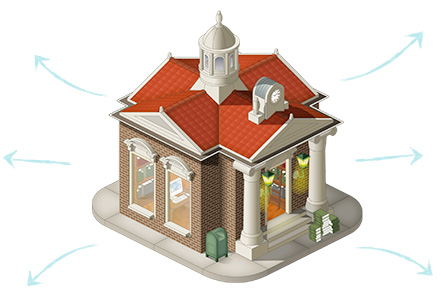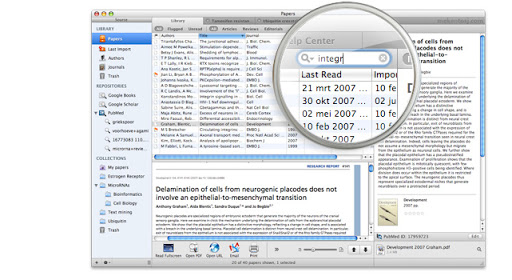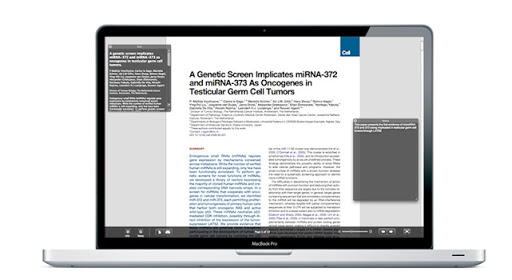Papers - personal cataloger of scientific articles

Hello.
Probably each of us who have ever engaged in some kind of scientific or near-scientific research, rested on the problem of organizing and collecting sources. It is no secret that most modern scientific articles and books are replete with references to sources and more detailed explanations of any material. This “kills” two “hares” at once:
- Testability Any non-obvious assertion is supported by a reputable source.
- Learnability If the reader does not understand something, he can always familiarize himself with the literature presented by reference.
When writing an article, try to follow similar criteria. Well, if the article is small, and sources only 10-20. And if a cycle of articles is being written? Or one big article / book? How not to get lost in the sources? How convenient to store them in one place with a quick search? A special program for Mac OS - Papers comes to the rescue.
')
As a description of the program, you can quote the New York Times:
“At last, I’m back to knowing what I have and where it is. Bedlam has been defeated. ”

The main features of the program:
- Full cycle of work with the source (indication of the author, journal, links, etc.)
- Grouping by author, journal, source
- Creating "smart" and not very collections
- Search for annotations or complete articles through specialized search engines (ads, google scholar, ieee, pubmed, etc.)
- Auto download articles / annotations from the Internet with the correct placement of all fields
- Plug-ins, the ability to write your own, the ability to add an alternative search engine with the appropriate interface
- Flexible settings: how to display articles, how to generate keys for Bibtex, how many authors to display, etc.
- Export bibtex records (hello, single links in articles)
- (!) regular updates (for example, when changing the query scheme to specific search engines)
- The ability to leave notes and more.
Thus, having spent once your time to streamline an existing collection, you get a handy tool for viewing, editing, exporting quotes and keys. And no longer need to search through folders to find out where that lies. Of course, a collection search is also possible, as well as integration into Spotlight. It is also possible to share a certain article and / or send it by mail to a colleague.
A huge advantage of the program is the availability of versions for the iPhone and iPad. Already we can assume how comfortable it will be with the new iPad, lying in bed or on the road, read the relevant materials or make yourself notes.
Among the shortcomings are the following:
- Difficulties in merging magazines / articles. Some magazines consider it their duty in one article to indicate a title in one way, and in another in another. As a result, Papers scatters articles in various magazines. It is easy to transfer from one journal to another, but it is not obvious to delete an “empty” journal.
- English interface and logic. Here the second is more important, since it is absolutely nontrivial to correctly add a Russian-language article (especially, tinker with initials and arrange them in the correct order). However, most reasonable scientific articles are either published in English, or there are corresponding translations.
- Overpriced iPhone / iPad applications. Subjectively expensive ($ 14.99), although the price is quite acceptable for such a narrow-segment program
- Unclear program icon.
The cost of this program is 42 $ (or 29 €). For students and graduate students a 40% discount is provided, with which the program looks even more attractive. You can download (link to the dmg-image) and a trial version with a limit of 30 days of work.
In general, this program, in my subjective opinion, performs 100% of the functions assigned to it. Moreover, it makes it beautiful and easy.
Thanks for attention.
ps A few more screenshots:


Sources
- Official website of the program
- iPad version of Papers
- MacWorld Program Overview
- Images taken from the official website of the program.
Source: https://habr.com/ru/post/91385/
All Articles